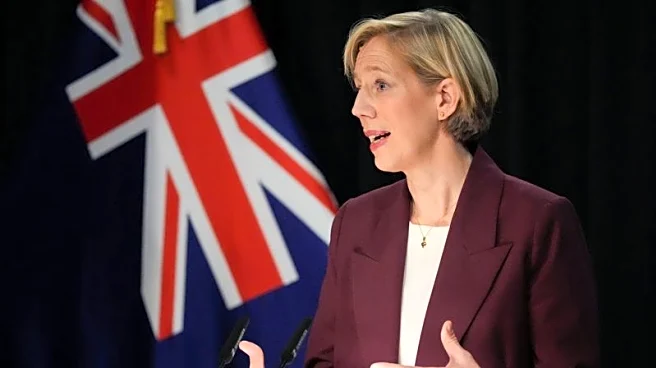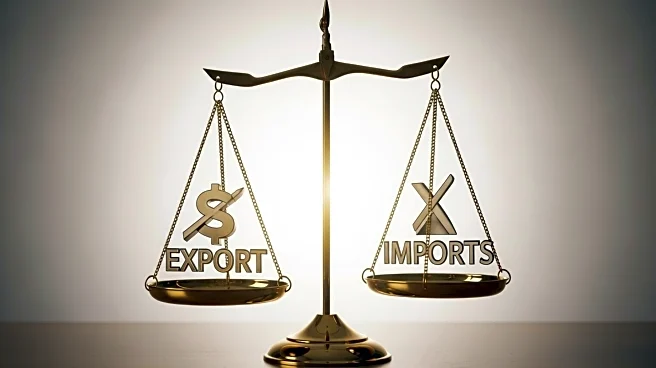What is the story about?
What's Happening?
Singapore's core inflation rate for August has reached its lowest point since February 2021, registering at 0.3%. This figure is below the 0.5% anticipated by economists and marks a decrease from the previous month's rate. The Monetary Authority of Singapore (MAS) attributes this decline to reduced costs in services such as holiday expenses, airfares, and inpatient services. Despite the easing inflation, Singapore is preparing for slower economic growth in the latter half of the year, as the initial boost from exports diminishes. The Ministry of Trade and Industry forecasts a full-year GDP growth of 1.5% to 2.5%, a significant drop from the 4.4% growth recorded in 2024.
Why It's Important?
The reduction in Singapore's inflation rate is significant as it suggests a potential shift in monetary policy by the MAS. Lower inflation rates can lead to more relaxed monetary policies, which may influence global economic strategies, especially in regions heavily reliant on Singapore's trade. The anticipated economic slowdown could impact international markets, particularly those engaged in trade with Singapore. The easing inflation also reflects broader global economic trends, where weaker demand is offsetting potential inflationary pressures from trade conflicts.
What's Next?
The MAS is expected to consider loosening its monetary policy in October, following previous adjustments in January and April. This decision will be crucial as Singapore navigates the economic challenges posed by declining export growth. The MAS's unique approach to monetary policy, which involves managing the Singapore dollar against a basket of currencies, will be pivotal in maintaining economic stability. Stakeholders, including international investors and trade partners, will closely monitor these developments for potential impacts on their economic engagements with Singapore.
Beyond the Headlines
The current economic situation in Singapore highlights the complex interplay between global trade dynamics and domestic economic policies. The decline in non-oil domestic exports by 11.3% year-on-year in August underscores the challenges faced by export-dependent economies in adapting to shifting global demand. This scenario may prompt discussions on diversifying economic strategies to mitigate risks associated with reliance on specific sectors.
AI Generated Content
Do you find this article useful?














